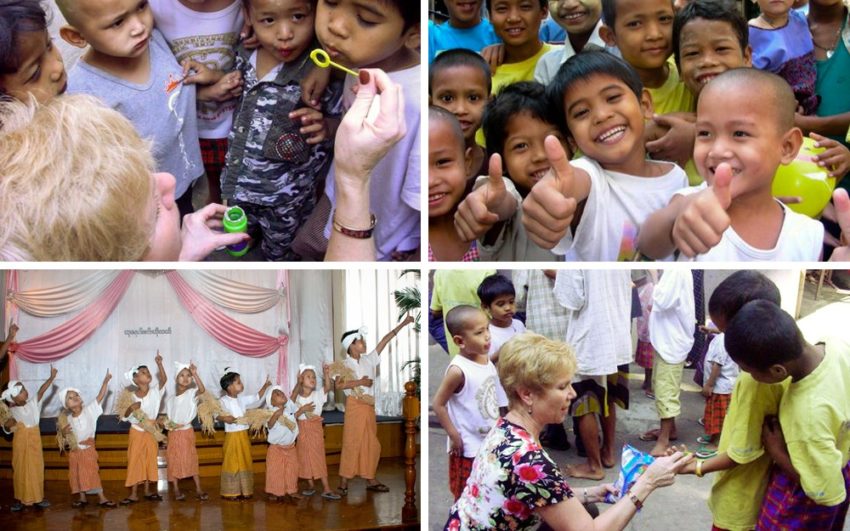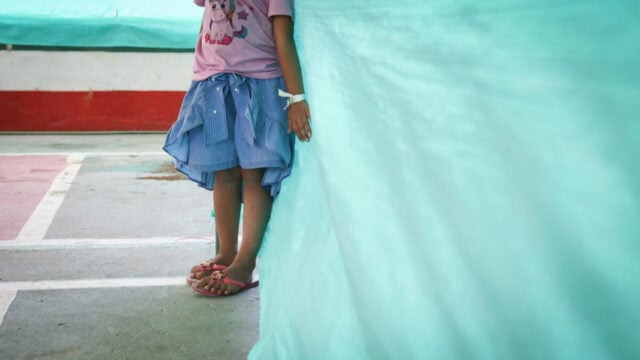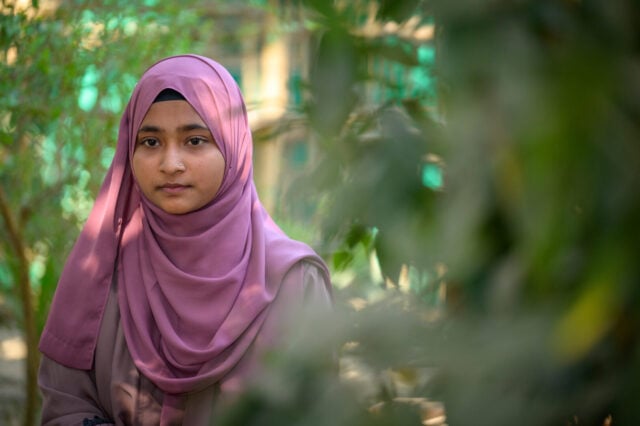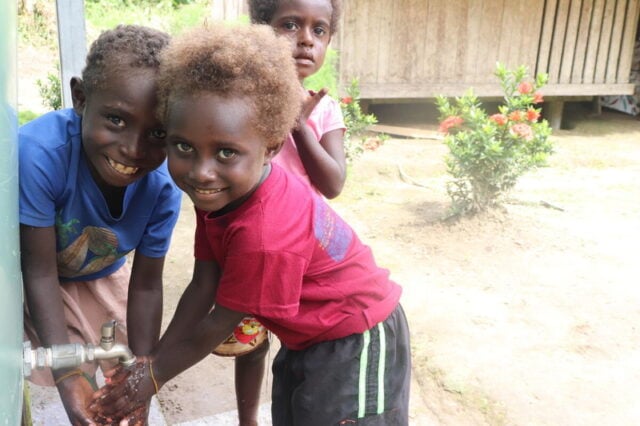Children living on the streets: I saw them everywhere on the busy streets of Yangon, Myanmar. They are easy to spot as they dart artfully through the crowds — their clothes torn and dirty, their faces smeared with the yellowish paint commonly used as sunscreen, their filthy arms and legs in desperate need of a hot bath. Homeless, hungry, and far too often alone in this world, these children’s lives are a daily battle for survival.
Over the 13 years I have traveled with World Vision, the sight of a 6-year-old begging on the street has become part of the heartbreaking but normal tapestry of any large city in the world. To be honest, I have had to fight against falling into the easy trap of not truly seeing them, thus sparing myself the pain of feeling their desperate need. Perhaps it is human nature to separate our hearts from those things for which there seem to be no answers.
But on Friday, Feb. 16, 2007, I was introduced to a place where the battle for survival is being won and children are being blessed with hope. It is called the drop-in center, and it is one of several World Vision temporary shelters open to the children living on the streets of Yangon. At home, we tell friends to drop in anytime for a visit or a cup of coffee. In Yangon, World Vision says to the thousands of children living on the street, “Drop in anytime for a meal, a bed, or a bath. Drop in for school. Drop in for hope. Drop in for life!”
This was my experience the day I visited the drop-in center.
He … will rejoice over you with singing.—Zephaniah 3:17
Conveniently located off of a busy downtown street, the drop-in center is close to a large open-air market where many of the children spend their nights. As we drive through the gates into the small courtyard, a few brave boys watch with big eyes and shy smiles. Soon a flood of other smiling faces appears, eager to greet us with a cheery “Halloo.” I later learn that there are 19 boys currently in the program; girls are sheltered at a separate location. None appear older than my 10-year-old grandson but the tallest boys are actually 16 or 17.
The World Vision project coordinator, Khin May Aye, steps forward to greet me and while I have the kids in one place, I pull out my camera. The children are delighted to see their own faces and I quickly make friends. Khin May then shows me inside the two-story building that is the gateway to hope and safety for these children. Everything is.
“When a child arrives, this is where we greet them and get them registered,” says Khin May, pointing to a small table in the entryway. “There are no requirements. All children are welcome!
“How do they find this place?” I ask.
“Other children bring them. We also have World Vision staff who go out on the street to find needy children and invite them to come.” Khin May goes on to explain that this can be a challenge as many children have lived on the street so long, they are unwilling to give up their freedom and independence. Others are suspicious and fearful, having come out of abusive situations where adults betrayed their innocence and became the enemy.
Leaving the center’s lobby, I am shown into the library. The small room boasts a few wooden chairs and two shelves of well-worn paperback books. Many are in the comic book format, and all have seen better days, their ragged pages bearing testimony to the many fingers that have handled them.
I look at one of the older boys and ask, “Can you read something for me?” The center offers informal classes in reading, writing, and math, and I am curious to see how well World Vision is doing in giving these children a basic education.
The boy takes the brightly illustrated book and begins to read in a clear, strong voice. At first, I listen, watching his eyes race confidently over the page. He is a good reader, although I have no understanding of what he is saying. Glancing at the illustrations, I am shocked to see a picture of a man hitting his wife while a child cowers in the corner!
“This is a book we have written to teach children that they have rights,” Khin May explains. “This chapter says that wives and children should not be hit, and it tells them what to do and where to go for help if they are. Another chapter is about a girl who wants to go to school but her parents won’t let her because they need her to sell fish all day in the market. Another is about what to do if someone forces you to have sex. These children have been raised to believe that they have no voice. They don’t know that they have the right not to be abused. And before we can help them to have a better life, we must teach them to value themselves.
“At the same time we must teach them to respect and value others,” she goes on. “I tell them that you cannot expect others to treat you well if you don’t take responsibility for doing your part. It all begins with you. You choose not to fight or to steal. You choose to work hard and learn a skill. You make the right decisions and your life will get better.”
Leaving the main building we walk back under a large covered area where long dining tables double as school desks. It is surprisingly cool and pleasant in this shaded area. I comment on the loud chorus of birds singing in the trees overhead.
“Yes. They are nice,” Khin May agrees. “The sound of birdsong is unusual in the city. They make us so happy.”
Seeing the children sitting contentedly with their heads bowed over their schoolwork, I am reminded of the Scripture from Zephaniah that says, “He will rejoice over thee with singing,” and I am struck with the spirit of hope in this place.

Marilee Pierce Dunker travels the world as an ambassador for World Vision, the organization her father, Bob Pierce, founded in 1950. Like he did, she shares stories, pictures, and personal reflections, bearing witness to the extraordinary ways God is using his people to share the gospel and care for the poor.
Visit World Vision’s Speakers Bureau site to request Marilee or another World Vision speaker to present at your upcoming event.




